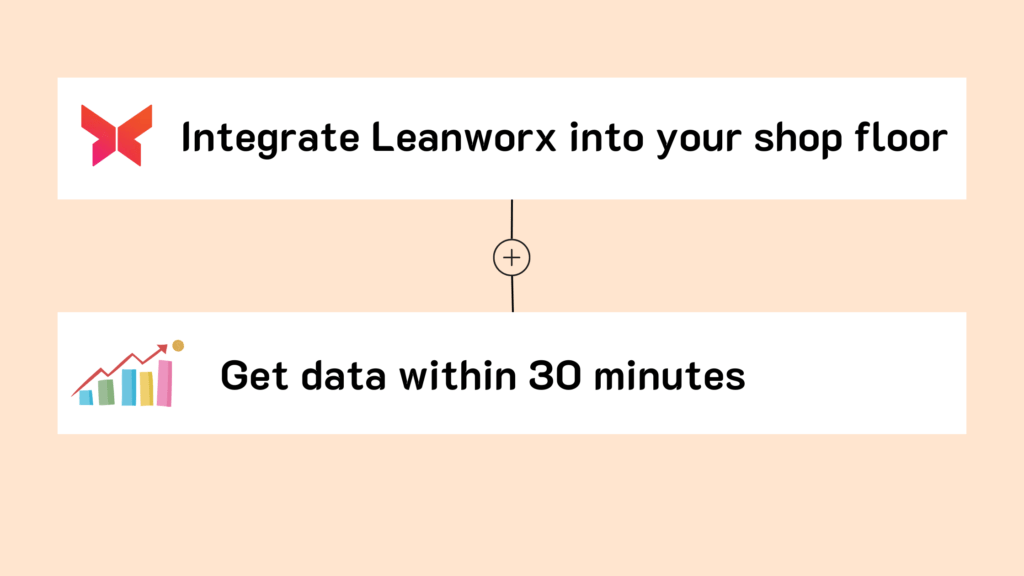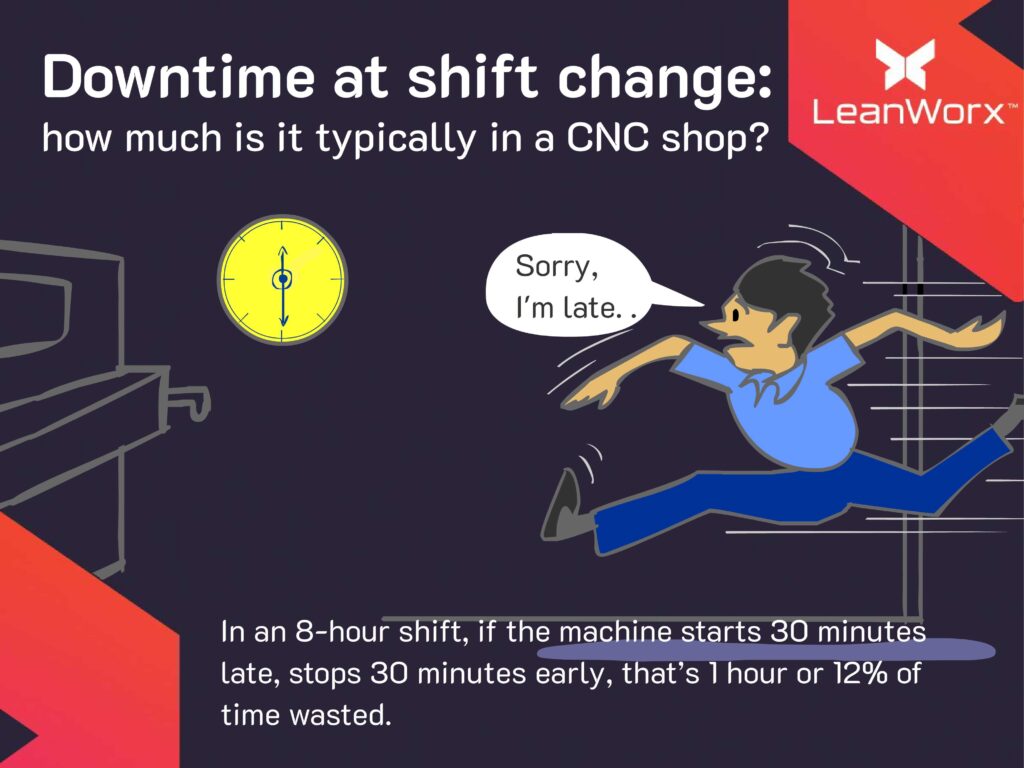How to increase production capacity in manufacturing in 2024
- July 17, 2024
Category : Machine Monitoring system
- How to increase production capacity in manufacturing in 2024

Dasarathi G V
Director in Leanworx
Dasarathi has extensive experience in CNC programming, tooling, and managing shop floors. His expertise extends to the architecture, testing, and support of CAD/CAM, DNC, and Industry 4.0 systems.
Try Leanworx for free
The most obvious answer to the question “How to increase production capacity in manufacturing” is to buy more machines. This is the easiest, but also the worst. The best answer is to increase the production capacity by improving the efficiency of machines and production lines by:
- Reducing machine downtime.
- Reducing part rejections.
- Reducing cycle times.
- Improving skill levels of personnel
What you’ll Learn :
Increasing production capacity utilization - the benefits
A universally used metric of production capacity utilization is OEE, Overall Equipment Effectiveness. OEE in HMLV (high mix low volume) manufacture is typically 40-50%. In mass production it is typically 60-70%. With consistent effort, it can be improved by 20-25%.
This is the impact of a low OEE on production and profitability:
- The ROI on the capital expenditure on machines is low. [ Learn how to improve it ]
- You are producing far fewer parts than you can be.
- CapEx on machines is much higher than it should be.
- You have more machines than required, so are spending more on space, operators, power, etc.
- Running cost is much higher than it can be.
- Your prices are much higher than they can be, and you are losing orders because of this.
How to improve production capacity
Merely producing more parts is not enough. You need to produce more parts and more good parts.
- Produce more parts by reducing downtime
- Produce more parts by reducing cycle time.
- Produce more good parts by improving quality.
The key to doing this is to have data from the machines that is accurate and timely. This data will tell you the extent to which you are losing production capacity, and what are the causes.
E.g., Data like this:
- What are the downtime incidences on each machine during the day ?
- What are the reasons for the downtimes ?
- Which are the top reasons, so that you can focus on them ?
- What are the part rejection quantities on each machine ?
- What are the causes of the rejections ?
- Which are the top causes, so that you can focus on them ?
- Are parts being produced to the standard cycle time, or are they taking more time ?
- Are the standard cycle times correct, or do they need to be revised upwards or downwards ?
To improve production capacity utilization, you need accurate and instant data on production quantities, rejections, rework, and downtime durations and causes.
Till recently, this data used to come to decision makers on the shop floor (everyone from the supervisor till the CEO) via paper, through a chain of humans.
Someone collects data from the machine at the end of each shift, notes it in a register, then enters it in a computer that is on the firm’s network. Someone else converts the data into charts and graphs for viewing by managers.

Each day’s data reaches managers the next morning, around 10 AM.
- The data is inaccurate because it is manipulated and depends on people’s memory.
- It reaches people too late to make any decision in case there is a situation that requires a rapid response.
The only solution is an Industry 4.0 based machine monitoring system that gives you accurate and instant data from the machine electronically, 24/7, wherever you are.
Short term strategies to increase production capacity
The short term strategy, that will give you rapid results in weeks, is to fix the human-related downtimes that are causing loss of production capacity.
These have very little time to fix (typically a few weeks) and generally little or no investment. These typically account for 30% of the total downtime. Here are some examples.
Start using Leanworx for free
We provide a 5-day free demo, with assistance in installation and usage.
Late start, early ending in shifts
Operators coming late at the beginning of shift, taking more time than allotted for tea, lunch, dinner, etc. This can easily add up to 1 hour per 8-hours shift, or 12 % of the available time.
You need to measure the downtime due to this behaviour and eliminate it. Leanworx has special reports of just downtime at shift start and end. All you need to do is this: Every morning, print the report for all machines for the previous day and put it up on the notice board. The problem will go away on its own.

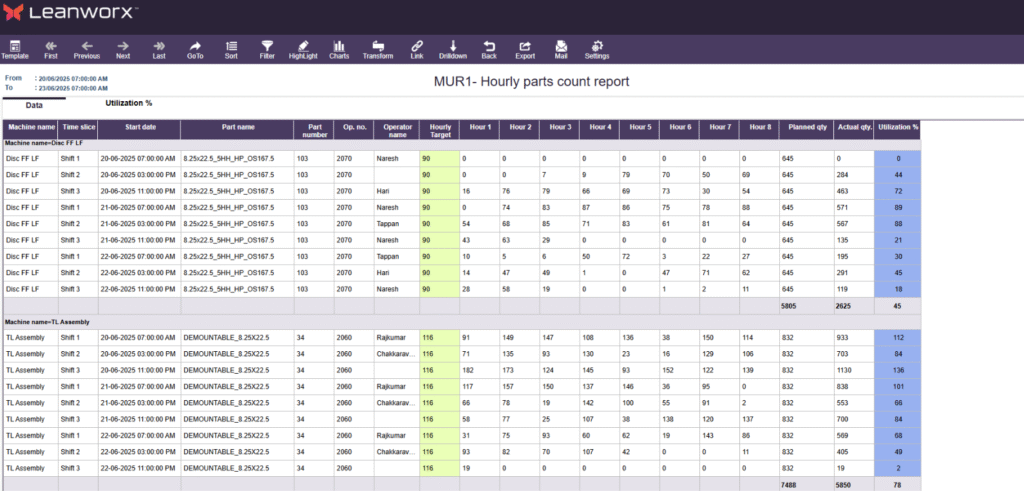
Delay in attending to machine breakdowns
When there is a machine breakdown, the operator goes in search of the supervisor or maintenance person to report the issue. This takes 10 to 15 minutes.
This is the ‘time to report’. Maintenance personnel arrive at the machine after a further delay. This could be because they do not take the issue seriously, or they are attending to problems on other machines.
If it is the former, conversations and culture change will fix the issue. If it is the latter, a combination of these actions will work:
- Reduce breakdowns through preventive maintenance and autonomous maintenance.
- Reduce the MTTR (mean time to repair) with better equipment and more training.
- Hire more maintenance personnel.
Long term strategies to increase production capacity
The long term strategy, that will give you bigger benefits, is to fix the system-related downtimes that are causing loss of production capacity.
In addition, reduce part rejections. These need a few months to fix, and generally require some investment. These typically account for 70% of the total downtime. Here are some examples.
Process problems
These are downtimes that are a necessary part of the process but can be reduced. E.g., downtimes for first-part inspection, setup, tool replacement, etc.
Machine Breakdowns
You need to reduce both the number of breakdowns as well as the time to fix each breakdown. The frequency of breakdowns is reduced through preventive maintenance and autonomous maintenance.
The time to fix a breakdown has two components: time to attend and time to repair.
The time to attend is how long it takes for maintenance personnel to reach a machine after getting a report of a breakdown.
This can be reduced by rapid alerting in case of a breakdown, via an Andon board, hooter, or mobile phone alerts from an Industry 4.0 machine monitoring system.


The time to repair can be reduced with better equipment and training.
No raw material
This typically happens when there is no raw material available from an upstream process because that machine is underproducing or has a breakdown.
The solution here is again better machine maintenance to reduce breakdowns, and eliminating process problems.
High part rejections
This could be because of any of these reasons:
- Process capability of the machine is poor
- Operator’s skill level is low.
- Fixturing or tooling is poor.
How a machine monitoring system enables you to increase production capacity in manufacturing
To be able to reduce waste of capacity due to machine downtime and part rejections, you need to measure these, analyze them, and take action to reduce them. To take action, you need accurate and instant data on production capacity waste.

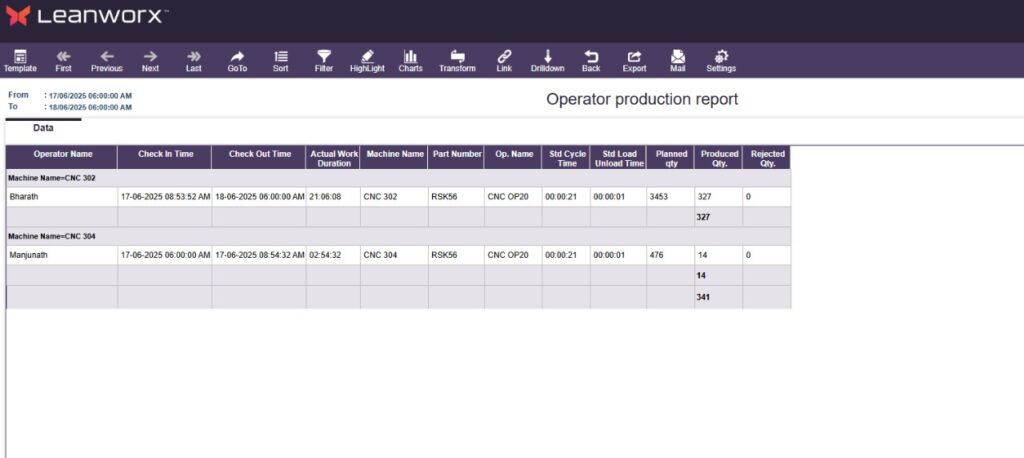
The old manual and paper-based data collection system cannot do this. It gives you inaccurate data because it is dependent on people’s memory and honesty. It also cannot alert you to a situation that requires immediate attention.
Only an Industry 4.0 based machine capacity improvement software can give you accurate and instant data , Leanworx does this for you.
It is connected electronically to your machines and monitors them 24/7 electronically, remotely. On your laptop, tab or smartphone, you can get reports on production quantity, part rejections, downtimes, OEE, and other key data.

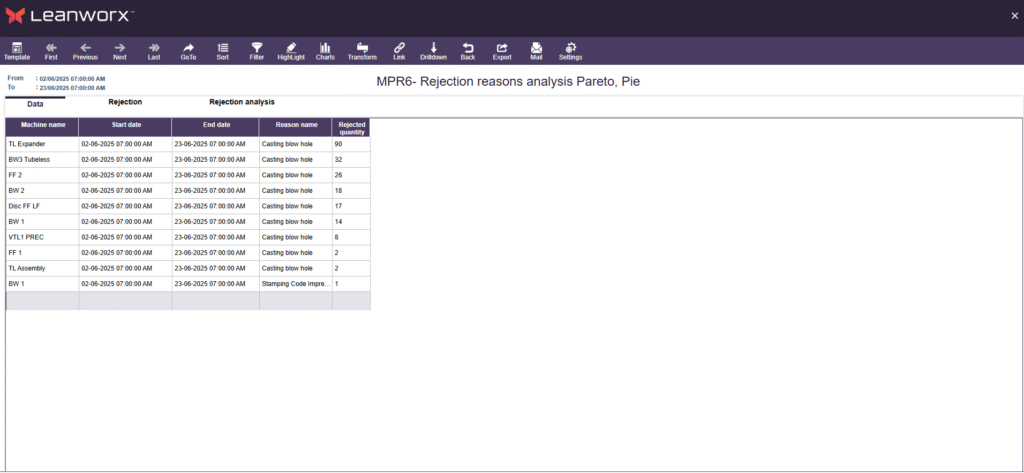
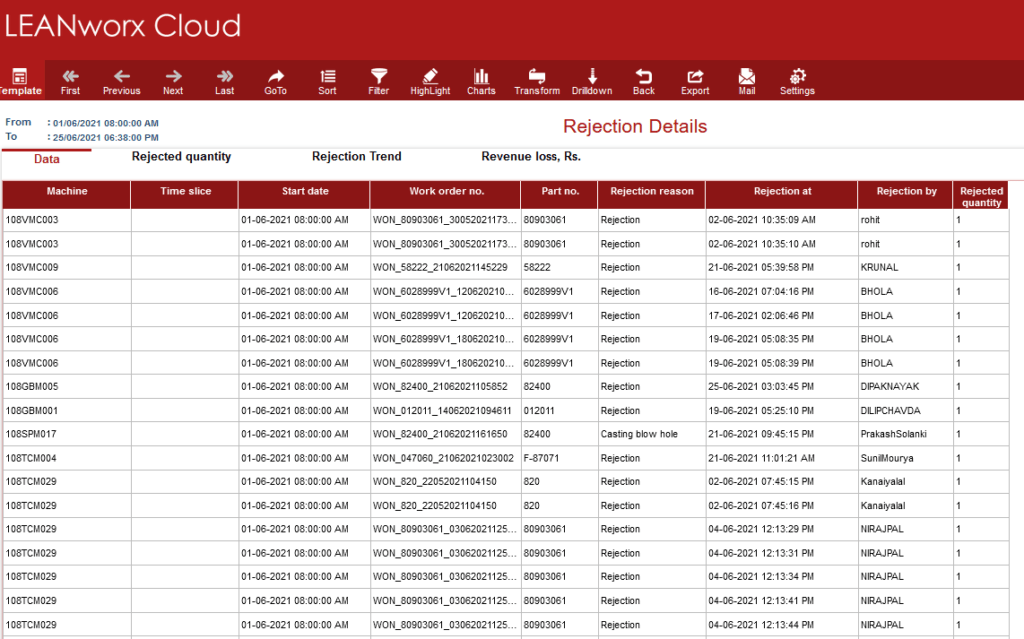
You are alerted to abnormal situations that require immediate attention on your mobile phone – machine breakdown, production below target, rejections above limit, etc. So you can take immediate action in crisis situations, and analyze historical reports to improve systems in the long term.
Keep Learning
Increase your profits automatically. Use Leanworx to get accurate and instant data 24/7.
